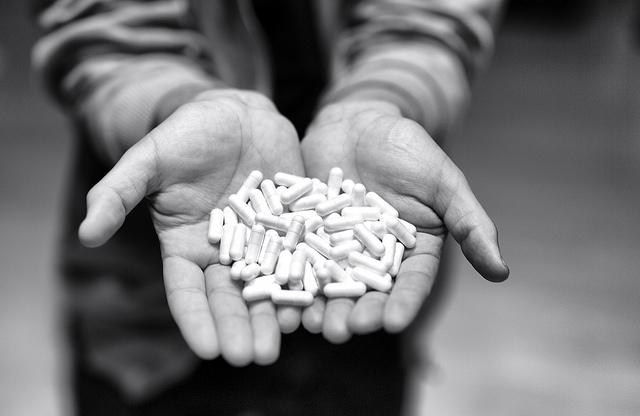You are what you measure
Posted By John Coyne on March 2, 2015 @ 14:30
Recently-released Australian Institute of Criminology (AIC) research, Findings from the DUMA program: Impact of reduced methamphetamine supply on consumption of illicit drugs and alcohol [2], casts further doubts over the effectiveness of Australian border-enforcement agencies’ use of seizure statistics as performance measures. The research reinforced the validity of Australia’s ‘harm minimisation through supply reduction’ policies, but found that current strategies appear to be having little effect on supply.
While the Australian Crime Commission continues to report increased seizures of Amphetamine Type Substances (ATS)—from 2012 to 2013 an 85.6% increase in detections and a 515.8% increase in total weight of ACC seizures—the AIC researchers found that those were not having any marked impact on the drug’s domestic availability to users. True, border enforcement’s impact on ATS domestic availability is delayed by factors such as the presence of stockpiles, or market-responsive domestic manufacturing. Still, increased seizure rates have been a consistent trend over recent years, so decreases in domestic availability should have been realised by now, if the current strategy were effective.
For organised crime groups (OCG) the Australia ATS market has strong economic pull factors; a high per-capita user demand, and a market that’s characterised by high and stable prices (In global terms). To undermine the profit motivation for OCG in the Australian ATS market, border agencies need to seize large proportions of the total quantity of incoming drugs. I think it would be safe to assess that despite record seizures, stable user prices reveal border and enforcement agencies are not seizing increasing percentages of the total ATS (and their precursors) being imported into Australia.
From reading the research material, I’m left with an impression of disconnects between the use of seizure rates as a performance measure and the achievement of the government’s policy intent of harm minimisation. That isn’t a criticism of the good work of our border and enforcement agencies. It’s a commentary on whether concentrating strategy towards higher seizure rates, at the cost of other more innovative enforcement strategies and measures, is the best approach to supply reduction.
In the interim, border agency decision-making continues to focus on achieving higher seizure rates, fearing criticism for weaker performance. Border security policymakers are in a conundrum over whether to continue to pursue politically-sensitive increases in seizures or the less tangible complex and difficult outcomes that are actually required. I don’t believe that the policy challenge is an exclusive choice;—to seize or not to seize. I’d like to see the pressure to increase seizure rates reduced, to allow our enforcement agencies the opportunity to redirect resources to address border vulnerabilities. At the same time additional performance measures – such as the average street price of ATS in Australia – could be used to measure agencies’ contributions to government outcomes. Factors such as changes in the domestic ‘street price’ of ATS could be used as tangible measure of the impact that border enforcement agencies have on markets, despite the inherent inaccuracies involved in estimating average street prices.
With the Attorney General’s Department’s review of the National Organised Crime Response Plan 2010-2013 now two years overdue, it would seem an appropriate time to revisit the current policies that underpin the national response to ATS.
John Coyne is a senior analyst at ASPI. Image courtesy of Flickr user Daniel Foster [3].
Article printed from The Strategist: https://aspistrategist.ru
URL to article: /you-are-what-you-measure/
URLs in this post:
[1] Image: https://aspistrategist.ru/wp-content/uploads/2015/03/15097483625_1970ce21aa_z.jpg
[2] Findings from the DUMA program: Impact of reduced methamphetamine supply on consumption of illicit drugs and alcohol: http://aic.gov.au/publications/current%20series/rip/21-40/rip36.html
[3] Daniel Foster: https://www.flickr.com/photos/danielfoster/15097483625/in/photostream/
Click here to print.
